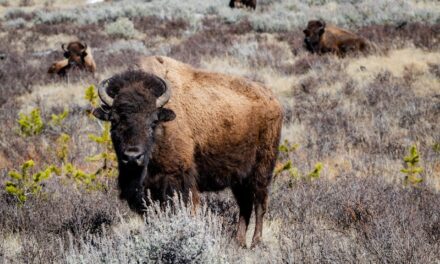Vermont, known as the “Green Mountain State,” has a rich and varied history that dates back to the early 17th century.
From its indigenous roots and colonial foundations to its role in the American Revolution and its development into a modern state, Vermont has uniquely shaped the United States.
Below, we explore Vermont’s fascinating history, covering its foundation, key historical events, and notable landmarks.
Table of Contents
Early History
Indigenous Inhabitants and European Exploration
Before European settlers arrived, Vermont was home to various Native American tribes, including the Abenaki.
- These tribes had established societies with rich cultures, agriculture, and trade networks.
- European exploration began in the early 17th century, with French explorer Samuel de Champlain visiting the region in 1609.
The indigenous peoples and early European explorers laid the groundwork for future settlements.
Colonial Period
Vermont’s colonial history began in the 18th century.
- The territory was disputed between New Hampshire and New York, leading to conflicts known as the New Hampshire Grants.
- The independent-minded settlers formed the Vermont Republic in 1777, which lasted until Vermont’s admission to the Union in 1791.
Vermont’s early economy was based on agriculture and small-scale manufacturing.
Growth and Development
The establishment of small towns and farming communities marked Vermont’s growth.
- The state’s economy diversified by developing industries such as dairy farming and lumber.
By its statehood, Vermont was a thriving community with a strong sense of independence and self-reliance.
18th Century and the American Revolution
Pre-Revolutionary Period
Vermont played a significant role in the lead-up to the American Revolution.
- Ethan Allen and the united Green Mountain Boys were instrumental in resisting New York’s claims over the territory.
- Vermont declared independence from New York and Great Britain in 1777, forming the Vermont Republic.
Vermont’s leaders and citizens were dedicated to the cause of independence.
Revolutionary War
During the American Revolution, Vermont contributed significantly to the Patriot cause.
- The Green Mountain Boys were who captured Fort Ticonderoga in 1775, providing crucial artillery for the Continental Army.
- Vermont’s strategic location and militia were vital in several key battles.
Vermont’s contributions were crucial to the overall success of the American Revolution.
19th Century Development
Statehood and Industrialization
Vermont was admitted into the Union as the 14th state on March 4, 1791.
- The state saw significant growth in agriculture, particularly dairy farming, and the development of industries such as textiles and iron.
The early 19th century brought economic diversification and growth to Vermont.
Civil War and Post-War Era
Vermont played a significant role in the Civil War, providing many soldiers for the Union Army.
- The state’s economy continued to grow with the development of the railroad and increased industrialization.
Post-war Vermont saw continued economic development and population growth.
20th Century and Modern Era
Economic Shifts and Cultural Developments
The 20th century brought significant economic changes and cultural developments to Vermont.
- The decline of the usual traditional industries led to a focus on tourism, education, and small-scale manufacturing.
- Vermont became known for its progressive politics and environmental initiatives.
The state’s cultural institutions, including museums, theaters, and festivals, reflect its rich heritage.
Environmental and Historical Preservation
Vermont has a strong commitment to preserving its natural beauty and historical sites.
- The state has numerous parks and historic sites, such as the Bennington Battle Monument and the Calvin Coolidge Homestead.
These efforts ensure that Vermont’s history and natural landscapes are protected for future generations.
Notable Landmarks
Bennington Battle Monument
This monument commemorates the Battle of Bennington, a pivotal American victory in the Revolutionary War.
- The site includes a museum and offers educational programs about the battle and its significance.
The Bennington Battle Monument is a key landmark in understanding Vermont’s role in the American Revolution.
Calvin Coolidge Homestead
The birthplace and boyhood home of the respected President Calvin Coolidge is located in Plymouth Notch.
- The site is preserved as historic and includes exhibits on Coolidge’s life and presidency.
The Calvin Coolidge Homestead highlights Vermont’s contribution to American political history.
Lake Champlain
Lake Champlain is a major natural feature in Vermont, offering recreational opportunities and scenic beauty.
- The large lake played a big part in early trade and military history.
Lake Champlain is a symbol of Vermont’s natural beauty and historical significance.
Governance
State Government
Vermont operates under a constitution adopted in 1793.
- The state government consists of the Executive, Legislative, and Judicial branches.
- The governor, currently Phil Scott, serves as the head of the executive branch.
The state government works to address the needs of its diverse population and manage its resources effectively.
Local Government
Vermont’s local government structure includes counties, towns, and special districts.
- Each level of government has specific responsibilities for services such as education, public safety, and infrastructure.
- Local governance ensures that the diverse needs of Vermont’s communities are met.
Effective local governance contributes to the overall well-being of the state’s residents.
Demographics and Growth
Population
Vermont’s population was 647,064 as of the 2022 census. The state’s demographic makeup reflects its history of immigration and cultural diversity.
Diverse demographics and steady growth reflect Vermont’s appeal as a place to live and work.
Education and Economy
Vermont is home to some of the nation’s top educational institutions, including the University of Vermont and Middlebury College.
- The state’s economy has diversified into education, healthcare, tourism, and technology sectors.
- Vermont is known for its strong environmental policies and support for sustainable agriculture.
These factors contribute to the state’s economic resilience and cultural vibrancy.
State of Vermont Q&A
Q: When was Vermont founded?
A: Vermont declared independence in 1777 and was admitted to the Union in with the other states as the 14th state on March 4, 1791. It was initially an independent republic before joining the United States.
Q: Who were the original inhabitants of Vermont?
A: The original inhabitants of Vermont were various Native American tribes, including the Abenaki. These tribes had established societies with rich cultures, agriculture, and trade networks before the arrival of European settlers.
Q: What role did Vermont play in the American Revolution?
A: Vermont played a crucial role in the American Revolution, providing leaders, soldiers, and strategic support. Notable events include the capture of Fort Ticonderoga by the Green Mountain Boys.
Q: How did Vermont’s economy evolve in the 19th century?
A: The 19th century saw Vermont’s economy dominated by agriculture, particularly dairy farming, and the development of industries such as textiles and iron. The state was also a significant player in the Civil War, contributing many soldiers to the Union Army.
Q: What significant changes occurred in Vermont post-World War II?
A: Post-World War II, Vermont saw economic shifts with the decline of traditional industries that were usual and the rise of sectors such as tourism, education, and small-scale manufacturing. The state also became known for its progressive politics and environmental initiatives.
Q: What are some notable historical landmarks in Vermont?
A: Notable landmarks include the Bennington Battle Monument, the Calvin Coolidge Homestead, and Lake Champlain. These sites highlight the state’s historical and cultural significance.
Q: How is Vermont governed?
A: Vermont operates under a constitution adopted in 1793, with an Executive, Legislative, and Judicial branch. The governor is the executive branch’s head, and counties, towns, and special districts manage local governance.
Q: What is the current population of Vermont?
A: As of the 2022 census, Vermont’s population was 647,064. The state continues to attract residents with its diverse culture, educational opportunities, and economic resilience.
Vermont’s dynamic history and commitment to preserving its natural and cultural heritage make it a unique and vibrant state.
By maintaining its historical landmarks and fostering growth in new industries, Vermont continues to honor its past while looking forward to a prosperous future.





